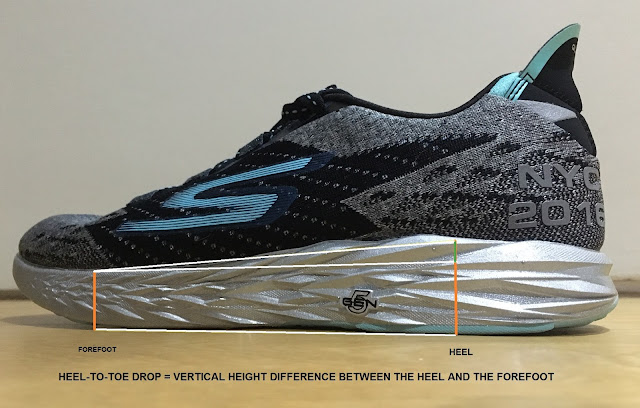Shoe Heel-to-Toe Drop: What it means for you

I’ve received some feedback about confusion regarding the definition of shoe heel-to-toe drop, and its implications for running style. Therefore, I am writing this brief article to try and explain what it all means for the average runner looking to buy a new pair of running shoes. You may sometimes come across terms like heel-to-toe offset, or heel-to-toe drop when you look at the technical information about a particular running shoe model. They pretty much all mean the same thing: the difference in height between the rear part of a shoe and the front . Bear in mind that all technical data are generally given for a size US9.0 shoe. It goes without saying that a smaller sized shoe with the same heel-to-toe drop would have a steeper ramp angle (that's the slope from the heel to the forefoot). [This section was edited on 27 Nov 16 2348Hrs. Thanks to Andy Neo for the correction] It is for this reason that brands like ASICS do not advertise the heel-to-toe drops for their shoe



